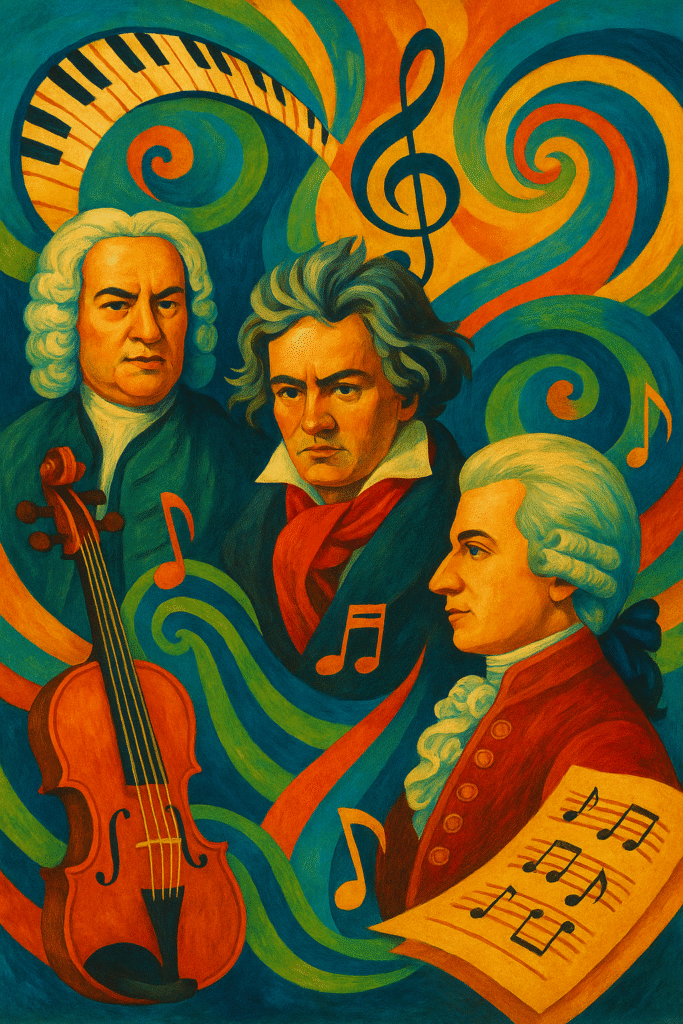Introduction
Classical music, often thought of as the music of the past, continues to play an influential role in contemporary music. Originating from cultural periods such as the Baroque, Classical, and Romantic eras, this genre has laid the foundation for many musical innovations. From the intricate symphonies of Bach to the emotive compositions of Beethoven, classical music has not only shaped the soundscapes of its time but also continues to inspire modern musical genres. By examining specific works and the stylistic developments of key composers, we can understand how this timeless form of music maintains its impactful legacy.
The Lasting Legacy of Bach
Johann Sebastian Bach, a master of the Baroque period, is often credited with refining the art of counterpoint and establishing musical norms that shaped the trajectory of Western music. His work, such as the “Brandenburg Concertos” and the “Goldberg Variations,” exemplifies structural complexity intertwined with aesthetic appeal. These compositions utilize intricate layers and harmonies that are mirrored in contemporary genres like jazz and progressive rock.
Bach’s influence extends beyond the realm of classical music. The principles of counterpoint, which involve independent melodic lines that are harmonically interdependent, can be seen in bands like The Beatles and complexities within jazz music. The fusion of intricate harmonies and technical brilliance in Bach’s work continues to inspire musicians across genres, proving that his contributions to the musical world are enduring.
Mozart and Beethoven’s Revolutionary Styles
Wolfgang Amadeus Mozart and Ludwig van Beethoven remain pivotal figures in the evolution of classical music. Each composer brought a unique vision and innovation to their craft that extended the boundaries of the music of their time. Mozart’s operas, such as “The Magic Flute,” and his Symphony No. 40 showcase his exceptional ability to blend lyrical beauty with structural precision. His influence is evident in how he revolutionized orchestration and operatic forms, creating emotional depth within musical storytelling.
Beethoven, on the other hand, is celebrated for his groundbreaking approach to symphonies. Works like Symphony No. 5 and the “Moonlight Sonata” broke with tradition through their emotional intensity and expanded structural form. Beethoven’s ability to transition from classical restraint to romantic emotiveness set the stage for future composers to explore personal expression within their music. His techniques laid the groundwork for the development of the symphonic form and can be heard echoed in film scores and modern orchestral compositions.
Contemporary Influence and Neoclassical Resurgence
Classical music’s influence is prominently seen in contemporary genres, providing a sonic palette that modern composers and musicians continue to draw from. The minimalist movement, spearheaded by figures like Philip Glass and Steve Reich, often cites the structured simplicity and rhythmic patterns rooted in Bach’s work as significant influences. This genre juxtaposes repetitive structures with gradual harmonic changes, creating a hypnotic effect that traces back to classical compositional techniques.
Moreover, film composers like John Williams and Hans Zimmer incorporate classical elements to create emotionally resonant scores. Williams’ use of leitmotifs in “Star Wars” mirrors Wagnerian opera, while Zimmer’s style often features the bold symphonic crescendos prevalent in Romantic music. Additionally, modern neoclassical artists, such as Max Richter, blur the lines between classical and electronic music, illustrating the genre’s adaptability and continuous relevance.
The Future of Classical Music’s Influence
While classical music has firmly established foundations across various musical genres, its future influence seems equally promising. As genres continue to merge and evolve, the foundational principles of classical music remain a vital resource for innovation. Whether through the resurgence of interest in neoclassical music or the integration of classical techniques in pop and rock, the timeless qualities of Bach, Mozart, and Beethoven’s compositions will undoubtedly influence future generations.
Conclusion
The impact of classical music transcends time, continuously shaping modern genres and inspiring musicians worldwide. By delving into the works of Bach, Mozart, and Beethoven, we gain insight into how their revolutionary techniques continue to resonate within today’s music landscape. From jazz to contemporary film scores, classical music serves as a profound source of inspiration and creativity. Its enduring legacy not only reflects the past’s monumental cultural achievements but also bridges the gap to future musical innovations, ensuring its relevance in the ever-evolving realm of music.
To explore further connections between classical music and modern genres, consider listening to key works mentioned in this article and reflect on their intricate melodies and timeless appeal.


